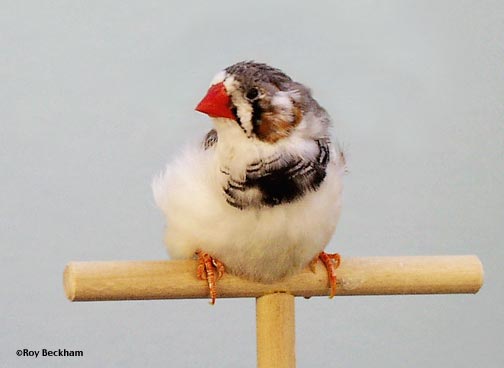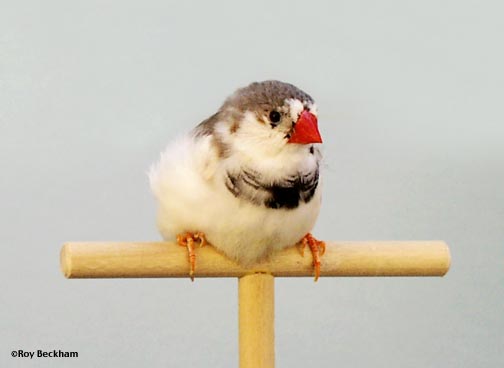




 |
|
|||||||||||||||||||||
 |
|
|
|
|
|
|
|
|
|
|||||||||||||
|
|
|
|
|
|
||||||||||||||||||
|
|
|
|
|
|
|
|
|
|
||||||||||||||
|
|
|
|
|
|
||||||||||||||||||
|
|
|
|
|
|
|
|
|
|
||||||||||||||
|
|
|
|
|
|
||||||||||||||||||
|
|
|
|
|
|
|
 |
|
|||||||||||||||
 |
 |
|
||||||||||||||||||||
|
|
|
|
||||||||||||||||||||
|
|
|
|
|
|
|
|
|
|
|
|
|
|
|
|
|
|
|
|
|
|
|
|
| Pied Zebra Finch | ||||
 |
||||
| Pied male Zebra finch | ||||
|
Mutation Effects Male and Female: White feathers replace the normal colored feathers in random patterns. On some specimens, the white areas totally eliminate the male markings. In these cases the color of the beak is used to sex the birds. Fledglings: Pied chicks can often be identified in the nest as soon as the wing feathers beginning to form. The beak of the young can also be mottled pink and black depending upon the amount of white feathering. This will later change to orange as the bird matures. Identifying Splits Combinations It should not be combined with white mutations, except for the all White, or pattern mutations like the Penguin. The white blotches of the Pied mutation when combined with white mutations like CFW, Florida Fancy or Fawn Cheek tend to ruin the effect of the orange markings on the white body. The dilute varieties like Dominant Silver also do not offer the contrast needed to make a very attractive combination. Black Face Recessive Silver Pied male (click to view) Notes The show standard calls for half the bird to be white and all the markings to be broken up approximately 50 percent. This is actually quite difficult to achieve. 'Light' pieds tend to have very little white and it starts with the flight feathers, chin and head. With repeated Pied x Pied matings, the amount of white increases. This can increase to the point that the last area of normal coloring is the back. These are often referred to as Saddleback Pieds. The amount of white can increase to the point that all the feathers are white. These white Pieds are sometimes entered in shows as 'White' Zebras and compete very well. Pieds are generally larger and have better conformation than the White Zebras that are available. The only way to determine if the bird is genetically a Pied or a White is with test matings. While many Zebras that are split for pied will show occasional white feathers, some birds that have been the repeated victim of a feather plucker will have the feathers grow back as white. If the follicle is damaged or if the bird is malnourished an unable to create the pigments, these feathers will grow back a pure white. This is not genetically controlled. |

The same Pied male Zebra finch as above. Notice the differnt pattern on this side of the head.
